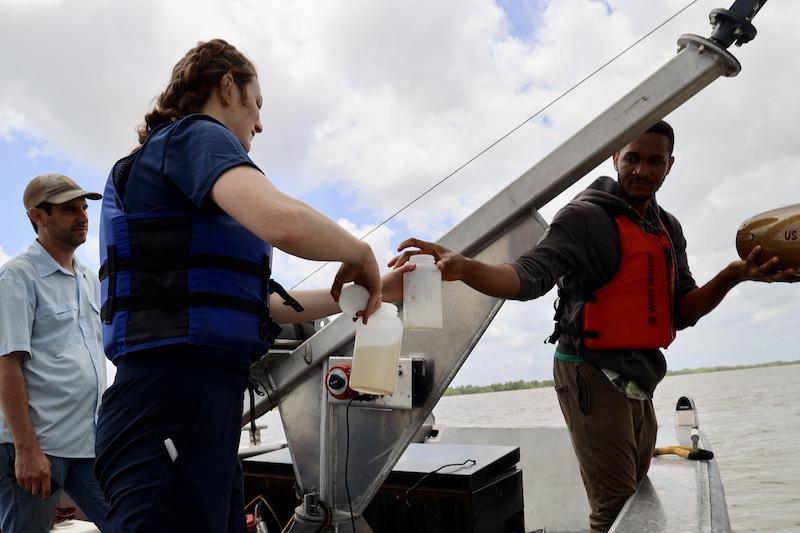New research finds Mississippi River losing most of its sediment before reaching Gulf
Tulane University researchers are spending days at a time on the Lower Mississippi River collecting water samples by boat to better understand water and sediment flow in the region known as the Bird’s Foot Delta, the southernmost tip of the river that juts out into the Gulf.
Their work involves plunging a 200-pound isokinetic sediment sampler into the river at various depths to measure river discharge, then using that information to build numerical models to test ways to save the Bird’s Foot. They are working to find out how much sediment remains in the wetlands above water versus how much exits into the deepwater Gulf.
The fieldwork is part of the five-year, $22 million Mississippi River Delta Transition Initiative (MissDelta) being co-led by Tulane and Louisiana State University and funded by the National Academies of Sciences, Engineering and Medicine.

